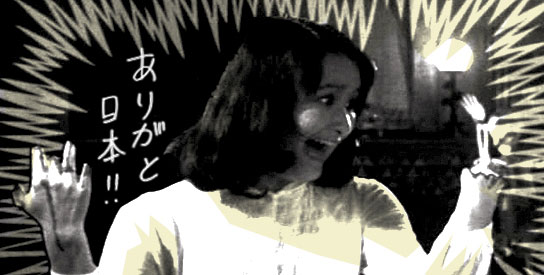 On May 12th 2014, H.R. Giger passed away and with him one of the greatest minds ever to contribute material to the silver screen. Everyone has seen his work in the Aliens movies, in Species 2 (where I particularly enjoy the train in the dream sequence), and some have even seen his work in Poltergeist 2. However I have been researching other, perhaps more obscure, movies that he worked on and found this gem.
On May 12th 2014, H.R. Giger passed away and with him one of the greatest minds ever to contribute material to the silver screen. Everyone has seen his work in the Aliens movies, in Species 2 (where I particularly enjoy the train in the dream sequence), and some have even seen his work in Poltergeist 2. However I have been researching other, perhaps more obscure, movies that he worked on and found this gem.
TOKYO: THE LAST MEGALOPOLIS
original title: 帝都物語 (Teito monogatari)
Japan, 1988, Akio Jissoji
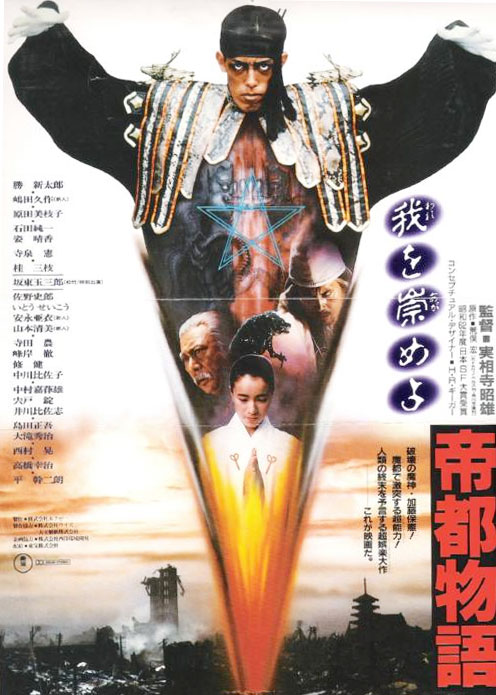
The movie opens on a ritual overlooking Tokyo in 1912. Yasumasa Hirai an old mystic-wizard-medium with a hat, which would be the envy of any smurf, conducts the proceedings. He divines that the head of Masakado, a legendary samurai who died in 940 A.D. will be awakened and lay waste to Tokyo.
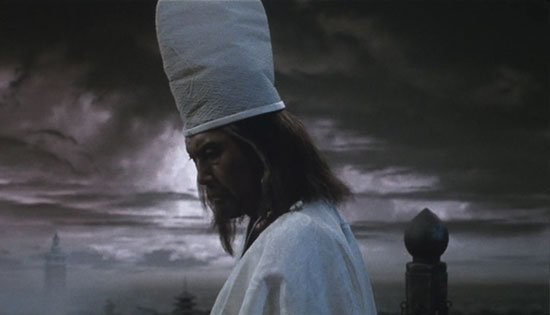
He claims he will turn the developing Tokyo into a mass graveyard. Masakado attempted to overthrow the government. During this event there were earthquakes, rainbows and lunar eclipses that all serve as the movies visual iconography. Masakado is actually still feared to be a powerful force of bad luck and during the shooting of the film there were many accidents, which were attributed to his spirit being angered.
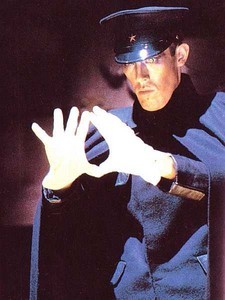
Apparently Kato is also a big fan of Diamond Dallas Page
The first hour of the movie is frenetically paced. Sumptuous dolly work, narratitively drawn lighting and expressionistic acting race along as we hold on for dear life. Admittedly there are a lot of side characters which go into different tangents sprawling over a 20 year timeline. Some people may argue that there is too much going on but I enjoyed it, it’s a series of sensory delights.
There are a few moments that I briefly lost track of what exactly was going on with some of the side characters but I was constantly gripped as to what the outcome would be. There is one scene, however, that I think has the most pointless method of foreseeing the future that I can imagine. The information that he receives doesn’t seem particularly important.

You could have just looked on a calender, mate!
The second hour slows down dramatically, and there we veer off into many of the other storylines that introduce a plethora of new characters. It picks up pace again but the first hour is such a rollercoaster that in comparison it seems quite slow.
Tokyo: The Last Megalopolis was made in a time when Japan was making many fantasy movies and is possibly the most expensive with a budget of over $14 million. There are huge scenes where they build a set replica of the Ginza district and employed over 3000 extras.
This movie is jam packed with content, there’s psychic wars between light and dark. Demons of many varieties ranging from small rat like monsters to green lizard types to intestine bugs and six-armed deities. There is a steam powered robot, a nihilistic villain and lots of gloriously 80s stop-motion animation.

A very serious S.T.D.
This movie is definitely worth a watch for any fan of Japanese effects-riddled-apocalyptic-occulty-sweeping epics. Stylistically, it seems to serve as a base for a lot of the manga we see today, and I think it has stood the test of time. On that note, please also watch Doomed Metropolis, the 1991 animated version of the movie.
Seeing any work that Giger had touched is an added treat and here is the conceptual work that he did for the movie…
And the finished product…
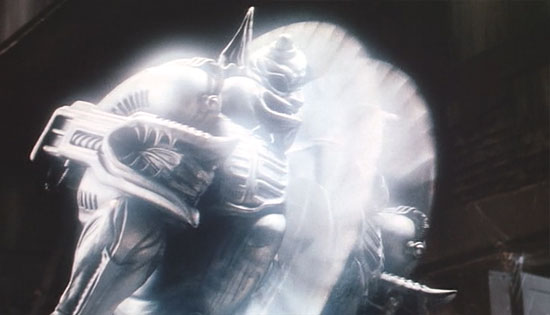
He was a hero of mine from my early teens onwards. When I found his art book it was as if it was a secret that only I knew of. I remember seeing a documentary around that time showing him working on his art. I was very touched to see that he was very doting and kind towards his elderly mother. Even admitting that when his mother thought his art was too graphic that he would alter it. His influence in cinema and the art world will live on forever and his light shall be sorely missed.
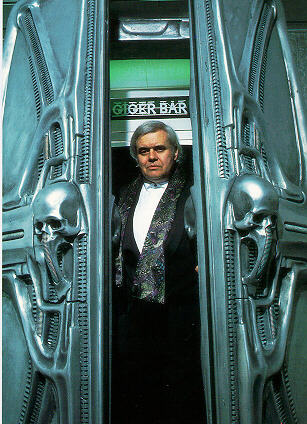
R.I.P. Dark Master…
Availability:
Tokyo: The Last Megalopolis is available on DVD in both the UK and the States. The UK edition is somewhat better, though they both have rather bad transfers.
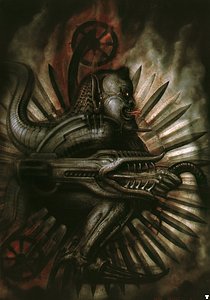
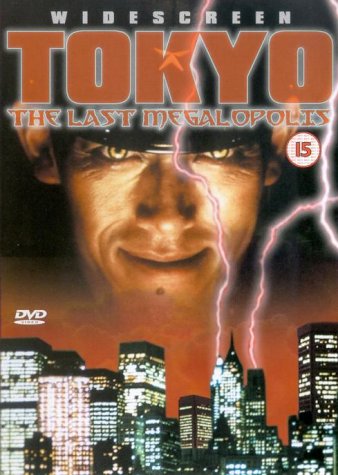





4 comments
voilodion says:
Jun 8, 2014
On the topic of Hirai killing himself to divine Tokyo’s future, I don’t get this either. In the anime DOOMED MEGALOPOLIS, it’s pretty clear that the reason he commits seppuku is to show his devotion to the Meiji Emperor, who has just passed away. The whole thing is an example of “Junshi”:
http://books.google.com/books?id=riI6iDtJGboC&pg=PA25&lpg=PA25&dq=junshi+seppuku&source=bl&ots=pjHkPjdunX&sig=KNm6d1cjjbBdl3b4DSf7ZzsdLHk&hl=en&sa=X&ei=bbSTU__OHYqI8AGKqYGwDA&ved=0CCcQ6AEwAQ#v=onepage&q=junshi%20seppuku&f=false
and was most likely inspired from this historical character:
http://en.wikipedia.org/wiki/Nogi_Maresuke
The divination aspect is just a secondary concern.
In this film, I’m sure if it’s a translation error or the writers of the intended something different here. Chronologically in the film, it takes place after the death of the Meiji Emperor, so you would expect the events to be connected. But the dialogue doesn’t make that clear. Instead he says something like “I am going to risk my life to to divine Tokyo’s fortune.” or something like that, which makes little sense. I’m sure there are much…healthier… ways of divining Tokyo’s fortune than self-sacrifice. Even more disconcerting, after he’s practically bled to death, he says “I must report my findings to the Showa Emperor!” Did he actually expect to survive that???
Regarding the film itself, indeed it’s more “sensory delight” than substance and storytelling. If you want exposition, you’re going to have to read the novel, which (unfortunately) has never been translated.
Disability-san says:
Sep 10, 2014
How do you know absolutly Giger worked on this film and the art desgin or that the Japanese creature creators who modled the monster suit were influenced by Giger?
Frankly I would say that they both look very similar, but unless I’m missing something in your article reveiw that confirms this than it would seem disrespectful to me to brush the creature creators off as simply fans of Giger. Unless you’ve stated it in the article some where that I don’t see or have found/have access to some peice of reference confirming the creator’s influence from Gigers thans you can’t credit the art and creative inspiration to him. Artists work differently with all kinds of.methods. I couldn’t imagine someone crediting my work to someone else just because it may seem similar.
Dave Jackson says:
Sep 10, 2014
I didn’t write this article, but Ken pretty clearly states that Giger was commissioned to design some of the creatures, but only ended up designing one. This is a fact. Saying that the creatures have a Giger influence isn’t disrespectful to the creature creators. He’s not saying they’ve stolen from Giger.
Disability-san says:
Oct 15, 2014
Thank you again Dave. This clears what I didn’t understand or know.